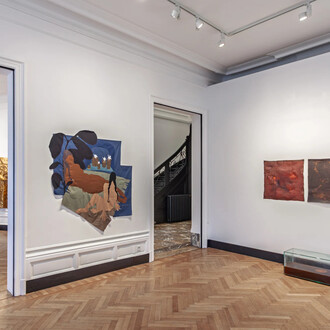The exhibition “Berlin” focuses on politicized art and the urban challenges of the modern but war-scarred metropolis between 1912 and 1932. Through paintings, sculptures, drawings, photographs and films by artists such as Otto Dix, Raul Hausmann, Ernst Ludwig Kirchner, Kazimir Malevich, Alexander Rodchenko, … the key movements and creative minds of this gripping period come alive again.
Berlin, a cosmopolitan, mythical artistic hotspot, and the capital of the first German democracy, was synonymous with artistic pluralism during the interwar. In Berlin, at a crossroads between East and West, art was closely linked to an everyday reality that was marked by crisis, social change, and decadence, but also by a short period of welfare known as the “Golden ‘20s”. It was a city where artists often painted a gloomy reality, despite the hope of a revival and a desire for peace after the First World War. A war that some had anticipated and others experienced at the front.
Based on the specific example of Berlin as the cultural metropolis of the ‘20s and on the various links between the Belgian and German art scene, this exhibition pays special attention to the society’s changes and utopias: the New Man, the New Woman, the New Objectivity, the New Building, the New Vision…
In a cosmopolitan city like Berlin even the biggest extremes are permitted to exist. An unseen activity in a rapid ephemeral life is unfolding there.
(Jozef Peeters, Belgian artist, 1923)
















